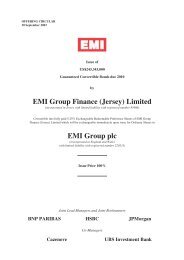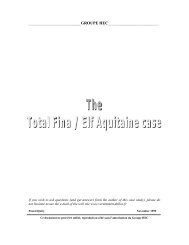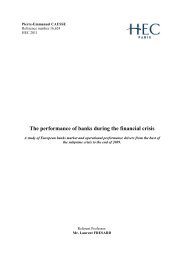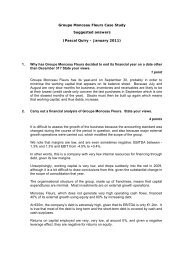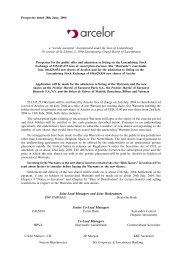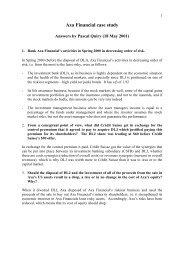Thesis_gd_final_vers.. - Vernimmen
Thesis_gd_final_vers.. - Vernimmen
Thesis_gd_final_vers.. - Vernimmen
Create successful ePaper yourself
Turn your PDF publications into a flip-book with our unique Google optimized e-Paper software.
description and analysis of the evolution of the US banking system based on a review of literature.<br />
The third section presents our data, the treatment we made and the variables we will use in the<br />
comparison of failed and safe banks. The fourth section presents the results of the comparison of<br />
failed and safe banks on 25 criteria and builds a profile of failed banks. The fifth section presents<br />
the results of our dynamic logistic regression and the extent to which it verifies our hypotheses on<br />
the determinants of bank failures during the crisis. Finally the sixth section concludes.<br />
2) The evolution of the US banking system before the crisis<br />
In a few decades, US banks experienced dramatic changes and transformations which were<br />
essentially fuelled by the combined impacts of deregulation and technological changes. This<br />
resulted among other things in the boom of financial markets and the development of<br />
securitization which lead to the 2007-2008 credit bubble and the following crisis. In this section we<br />
describe the main evolutions of the US banking industry in order to better understand the nature<br />
of the banking industry in the 2000s and the causes of bank failures during the crisis. This will help<br />
us determine the variables which we will use to compare failed and non-failed banks, as well as<br />
potential inputs to the dynamic logistic model.<br />
a) Deregulation and its impact on US banks<br />
i) A short history of deregulation<br />
At the beginning of the 80s, the US banking industry was essentially made of small depository<br />
institutions which dominated real estate lending, consumer lending and small business lending. In<br />
their article on community banks, DeYoung and al. (2004) explain that the US banking industry<br />
had been shaped by the regulation of the 1920s and 1930s following the Great Depression.<br />
According to DeYoung and al. (2004), commercial banking was the largest intermediary in the US<br />
financial system with nearly 60% of intermediated assets when including thrifts and other<br />
depository institutions.<br />
In this heavily regulated context, banks were protected from geographical competition by the<br />
McFadden Act of 1927 which prohibited interstate branching 2 . There was only one loophole in the<br />
McFadden Act, which allowed cross-border banking through multibank holding companies.<br />
However, prior to the Banking Act of 1956 exploiting this loophole required state approval.<br />
2 However the Mc Fadden Act did not put the same constraints on wholesale banking. Commercial and industrial<br />
loans could be delivered on a national basis through local loan production offices, as long as these offices did not<br />
engage in deposit-taking.<br />
- 4 -



